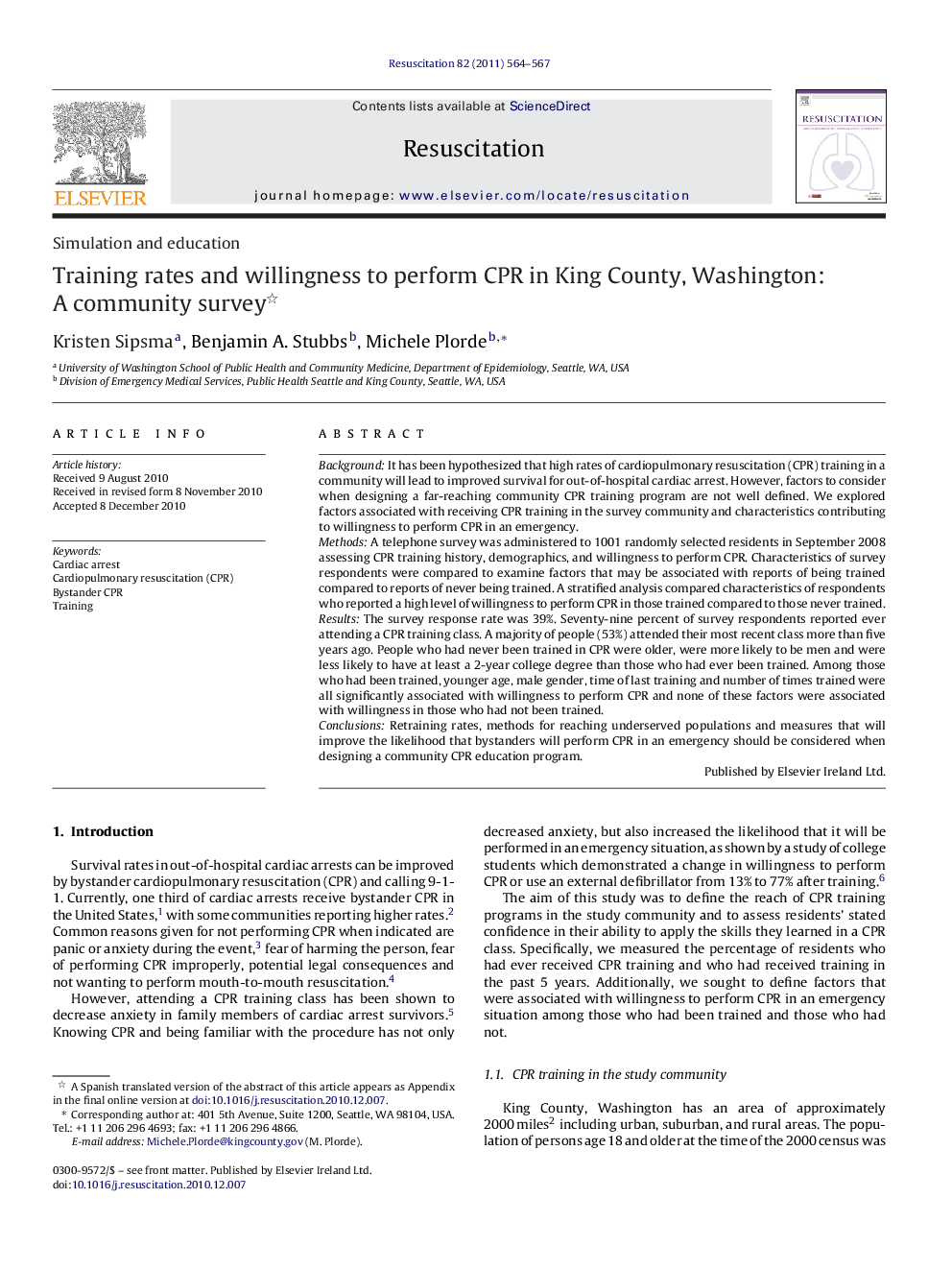| کد مقاله | کد نشریه | سال انتشار | مقاله انگلیسی | نسخه تمام متن |
|---|---|---|---|---|
| 3009675 | 1181494 | 2011 | 4 صفحه PDF | دانلود رایگان |

BackgroundIt has been hypothesized that high rates of cardiopulmonary resuscitation (CPR) training in a community will lead to improved survival for out-of-hospital cardiac arrest. However, factors to consider when designing a far-reaching community CPR training program are not well defined. We explored factors associated with receiving CPR training in the survey community and characteristics contributing to willingness to perform CPR in an emergency.MethodsA telephone survey was administered to 1001 randomly selected residents in September 2008 assessing CPR training history, demographics, and willingness to perform CPR. Characteristics of survey respondents were compared to examine factors that may be associated with reports of being trained compared to reports of never being trained. A stratified analysis compared characteristics of respondents who reported a high level of willingness to perform CPR in those trained compared to those never trained.ResultsThe survey response rate was 39%. Seventy-nine percent of survey respondents reported ever attending a CPR training class. A majority of people (53%) attended their most recent class more than five years ago. People who had never been trained in CPR were older, were more likely to be men and were less likely to have at least a 2-year college degree than those who had ever been trained. Among those who had been trained, younger age, male gender, time of last training and number of times trained were all significantly associated with willingness to perform CPR and none of these factors were associated with willingness in those who had not been trained.ConclusionsRetraining rates, methods for reaching underserved populations and measures that will improve the likelihood that bystanders will perform CPR in an emergency should be considered when designing a community CPR education program.
Journal: Resuscitation - Volume 82, Issue 5, May 2011, Pages 564–567